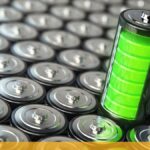If you’re looking for a 100G optical transceiver, you’ll want to know about the QSFP28 transceiver. This transceiver offers many advantages over other options on the market, including smaller size and lower power consumption. In this page, we will discuss the details about the QSFP28 100G transceiver. We’ll cover its specifications and how it can be used in various networking applications. So if you’re looking for a high-speed optical transceiver that is both efficient and affordable, the QSFP28 is definitely worth considering!
The QSFP28 transceiver is designed for use in 100 Gigabit Ethernet, EDR InfiniBand. The QSFP28 interface uses 4 channels 25Gbps high-speed laser port in differential signals with data rates ranging. It ensures the performance for applications in 100G DCI that require high bandwidth, low latency and low power consumption.
The QSFP28 form factor is very similar to the QSFP+ form factor, with the exception that it has four channels instead of four lanes. This makes it a better option for high-bandwidth applications that require low latency. Additionally, the QSFP28 transceiver consumes less power than other 100G transceivers on the market, making it a more efficient option.
One of the most common 100G interface specifications defined by the IEEE is 100GBASE-SR4. However, the transmission distance of SR4 is too short, 100M, which cannot meet the 100G medium QSFP long distance requirement. That’s where the QSFP28 LR4 comes in. This transceiver offers extended reach up to 10km, making it a better option for long-distance applications.
The IEEE has defined a number of 100G Ethernet specifications, including 100GBASE-SR4 and 100GBASE-LR4. The 100GBASE-SR4 specification uses four channels of 25Gbps signals to achieve a total data rate of 100Gbps. However, the transmission distance is limited to less than 300m.
The 100GBASE-LR4 specification uses four channels of 10Gbps signals to achieve a total data rate of 100Gbps. It offers an extended reach up to 10km, making it a better option for long-distance applications. One disadvantage of the QSFP28 LR4 transceiver is that it is not compatible with the 100GBASE-CR4 specification. The 100GBASE-CR4 specification uses four channels of 25Gbps signals to achieve a total data rate of 100Gbps. However, the transmission distance is limited to less than 150m. If you need a transceiver that is compatible with the 100GBASE-CR4 specification, you should consider the QSFP28 SR4 transceiver.
The QSFP28 transceiver offers a number of features that make it a good option for your networking needs. These features include:
–Small size and low power consumption
–Four channels of high-speed differential signals
–Data rates ranging from 25Gbps up to 40Gbps
–Compatible with 100 Gigabit Ethernet, EDR InfiniBand, and 32G Fibre Channel applications
If You need to upgrade your network to support 100G Ethernet, but you’re not sure which transceiver is right for your application. There are a number of different 100G transceivers , and it can be difficult to decide which one is right for your needs. The QSFP28 transceiver is a good option for smaller size and lower power consumption. Additionally, the QSFP28 transceiver consumes less power than other 100G transceivers on the market, making it a more efficient option.





